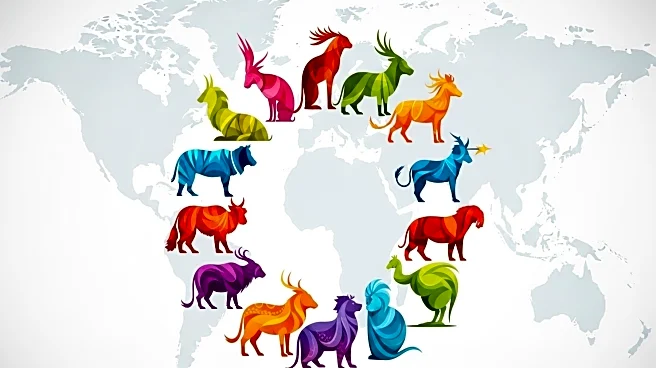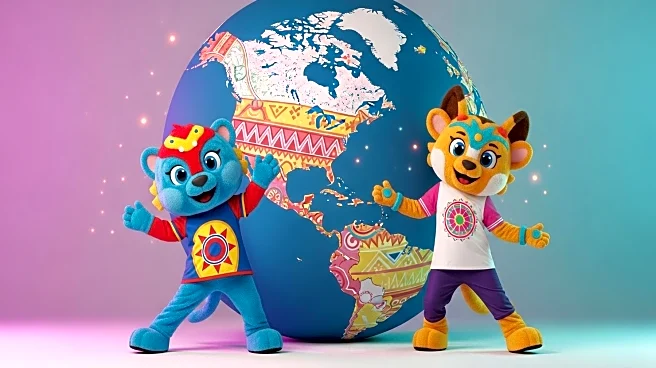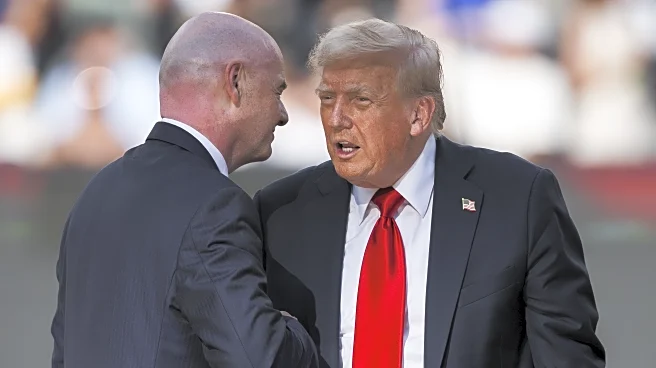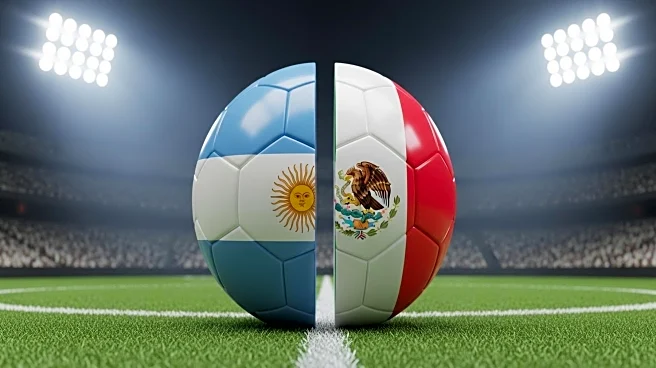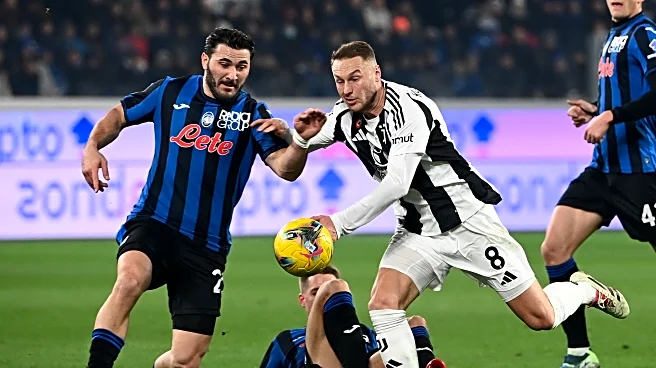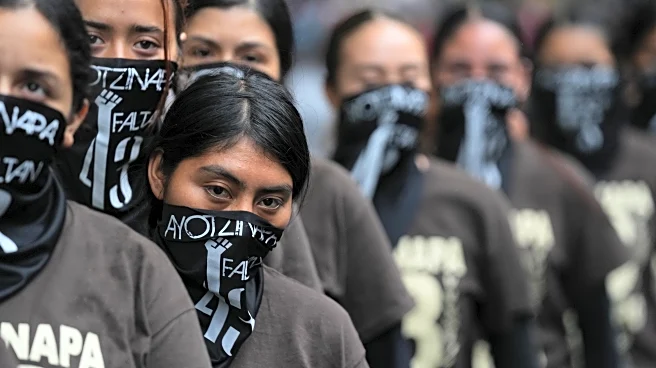What's Happening?
FIFA has introduced three mascots for the 2026 World Cup, each symbolizing the cultural heritage of the host nations: the United States, Canada, and Mexico. The mascots are Clutch the Bald Eagle, Maple the Moose, and Zayu the Jaguar. Clutch represents the United States, embodying curiosity and optimism, while Maple symbolizes Canada's rich cultural diversity. Zayu, hailing from Mexico's southern jungles, celebrates Mexican culture through dance, food, and tradition. These mascots are designed to reflect unity, diversity, and the shared passion for soccer. The tournament will feature 48 national teams, expanded from 32, and will commence on June 11, 2026, in Mexico City, with the final scheduled for July 19, 2026, at MetLife Stadium in New Jersey.
Why It's Important?
The unveiling of the mascots highlights the cultural significance and international collaboration involved in hosting the World Cup across three nations. This event is expected to boost tourism and economic activity in the host countries, as fans from around the world gather to celebrate the sport. The expansion to 48 teams marks a significant change in the tournament's format, potentially increasing global participation and viewership. The mascots serve as a symbol of unity and cultural exchange, promoting the values of diversity and inclusivity in sports. This development underscores the role of major sporting events in fostering international relations and cultural understanding.
What's Next?
The 2026 World Cup will feature 104 matches, with preparations underway in the host cities to accommodate the influx of visitors and ensure successful event management. Stakeholders, including local governments and businesses, are expected to ramp up infrastructure and hospitality services to meet the demands of the tournament. The introduction of a halftime show during the final is anticipated to enhance the entertainment value of the event, potentially setting a precedent for future tournaments. As the event approaches, promotional activities and marketing campaigns will likely intensify, aiming to engage global audiences and maximize the tournament's impact.
Beyond the Headlines
The choice of mascots reflects a broader trend in sports marketing, where cultural symbols are leveraged to enhance engagement and create a sense of identity among fans. This approach not only celebrates the host nations' heritage but also encourages cross-cultural dialogue and appreciation. The expansion of the tournament format may lead to logistical challenges, requiring innovative solutions to manage increased participation and ensure fair competition. Additionally, the event's emphasis on diversity and unity aligns with global movements advocating for inclusivity in sports, potentially influencing future policies and practices within the industry.

